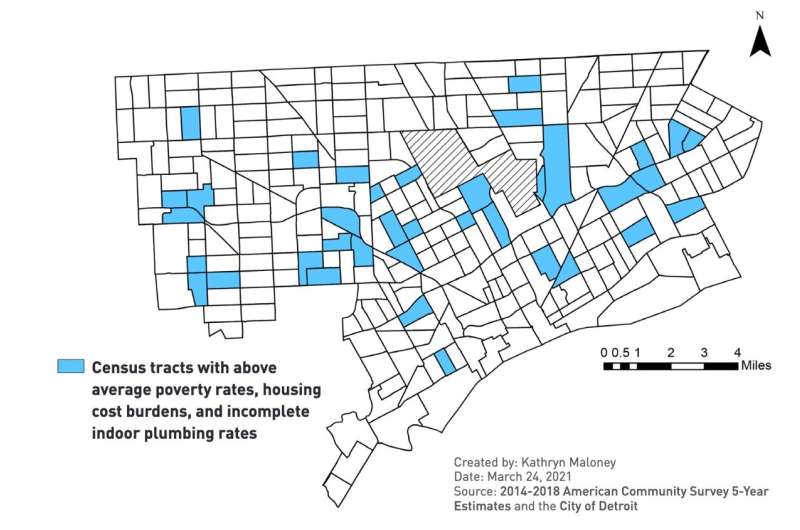MILLENIAL ANARCHISM; CONSENSUS POLITICS
Political discussions focused on consensus more comfortable, less divisive for students

A new study found more U.S. high school students felt respected in a political discussion designed as a deliberation—where the goal was to reach consensus—than in a group debate, and their views also moved closer toward agreement. Students engaged in group debate were generally more polarized after the activity.
Published in the Peabody Journal of Education, the study's findings could help teachers to structure political discussions in social studies classrooms, depending on the skills they want students to learn. In classrooms with high political diversity, deliberation could help reduce division.
"In our highly polarized climate, do we want kids to become more entrenched in their views, or more open to learning about the issues?" said the study's first author Paula McAvoy, associate professor of teacher education at NC State. "The value of deliberation is it can promote an openness to changing your mind and being persuaded. The debate model promotes taking a position and fighting for it. These findings can help teachers decide which skills they want students to learn, depending on how they structure classroom discussions."
In the study, researchers surveyed and observed 165 high school students who participated in political discussions in the fall of 2019 as part of the civic education program Close Up Washington. The program brings around 20,000 middle and high school students from public and private schools around the country to Washington D.C. for a week-long study of the federal government.
"This program offered us a chance to study a lab-like experience of high school students in political discussions," said study co-author Gregory McAvoy, professor of political science at UNC-Greensboro.
For political discussions held through the program, students were provided with background materials on issues and encouraged to discuss, with civility, issues including criminal justice reform, climate change, gun regulation, health care and immigration. In deliberations, students first read about different policy proposals. Then students discussed the proposals in small groups in order to try to come to consensus about a policy they all endorse, and presented their findings to the larger group. In debates, students formed two opposing teams, and then each student prepared persuasive arguments to try to win over a panel of their peers.
Ninety percent of participants they surveyed reported they felt respected in the deliberation that focused on consensus, and 91 percent reported they felt good about their comments. In comparison, 76 percent of students who engaged in debate felt respected during the activity, and 70 percent felt good about their comments.
"In terms of what made students feel more comfortable, we think the tone of the deliberation led more students to report feeling comfortable because it's collaborative, and not adversarial," Paula McAvoy said. "The debate was challenging because everyone had to stand up and make a 30-second comment to the group. A lot of students got nervous about that."
Young women were significantly more likely to report hearing something offensive during either type of discussion, to report they were more hesitant to speak, and were less likely to say they felt good about the comments they made. They did not find any statistically significant differences by race or ethnicity.
Students who responded to the survey were 79 percent white, 24 percent Latinx, 5 percent Black, and 2 percent Asian, with some students selecting more than one category. They were 54 percent female and 44 percent male. Two percent declined to answer. The sample was politically diverse, with an approximately even distribution of students identifying as conservative, liberal, moderate and unsure. However, the researchers said the respondents tended to more white, more conservative and wealthy compared to the demographics of Gen Z across the United States.
They plotted student's attitudes on specific issues before and after the deliberations and debates. For students who participated in consensus deliberations, they saw attitudes on the assigned issues start out dispersed—either with a wider distribution of views or two divided peaks. After the deliberation, researchers saw a trend across groups of views moving toward agreement. They saw more polarization—a move toward two opposing positions—after debates.
"In the debates, most of the talk that happens involves students talking to others who agree with them, and figuring out why the other team is wrong," Paula McAvoy said. "A lot of teachers use debate as a critical thinking activity, but you might actually be causing students to become more divided on issues."
The findings could help social studies teachers to structure discussions at a time when political culture is highly polarized. Previous studies have shown that students are increasingly arriving at schools with partisan animosity and anxiety related to politics, making teachers hesitant to bring politics into the classroom.
"What we're finding is that with appropriate structure and design, students are able to have student-centered, civil, informed discussions about highly controversial issues," Paula McAvoy said. "Even though there was a lot of political disagreement in the room, students were able to talk across their differences."
To see if their conclusions hold, researchers want to repeat the study with a larger sample size. They also want to find out if deliberation and debates look different with groups of different beliefs, ethnicities and other demographic factors.
The study, "Can Debate and Deliberation Reduce Partisan Divisions? Evidence from a Study of High School Students" was published online in the Peabody Journal of Education on July 14, 2021.






